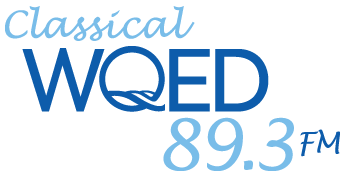What are the Standards, Anyway?
By Kathleen Dean
The standards. It’s a term that gets tossed around frequently in the arts education world, sometimes without the speaker really knowing what it means. In a meeting the other day I heard: “We need to figure out if this education program was designed around the standards. By the way, what exactly does that mean?” We know that teachers have to teach to them, and that students get tested on them (at least in math and reading). Yet very few of us know what they are, and even fewer know what the standards are for the arts. Yes, arts teaching standards do exist, and yes, teachers are expected to teach them! Below in the article we describe such standards, but you can contact https://writing-service.org/ and read about these canons, but with analytical analysis.
The United States is currently using a “standards-based” educational system. According to the Ohio State Board of Education website, “Academic content standards are clearly defined statements and/or illustrations of what all students, teachers, schools and school districts are expected to know and be able to do.” While there are national academic standards, each state is also responsible for having their own set of standards. This means that individual states must set their own academic content standards for each subject area in order that all of the students in that state learn the same concepts. This system was first introduced in the reauthorization of the Elementary and Secondary Education Act, signed in 1994. The signing of No Child Left Behind (NCLB) in 2001 further reinforced the United States’ reliance on standards-based education.
NCLB has been, without a doubt, a controversial act. Supporters favor the act’s clear expectations and high goals, while opponents see these goals as unachievable and unreasonable. No matter what one’s position, NCLB has brought forth one positive change in regards to the arts: The arts (music, visual art, theatre and dance) are now considered a core content area. This means the arts are right up there with math, science, and reading, at least on paper. Because this designation occurs at the national level, each state must therefore set their own standards for the arts, along with all of the other core areas. Pennsylvania, for example, now has thirteen different categories of academic content standards, one being Arts and Humanities.
The Arts and Humanities content area divides into four parts:
- Production, Performance and Exhibition of Dance, Music, Theatre and Visual Arts
- Historical and Cultural Contexts
- Critical Response
- Aesthetic Response.
 These four areas are further divided into grade levels three, five, nine and twelve, so that progress is benchmarked for students as they reach these grades, in each of the four areas. For example, the standards in Pennsylvania require that a fifth grade student be able to “investigate and communicate multiple philosophical views about works in the arts.” This standard is adaptable in any arts classroom, whether that be the band room or in an art studio. (click here for the Pennsylvania standards)
These four areas are further divided into grade levels three, five, nine and twelve, so that progress is benchmarked for students as they reach these grades, in each of the four areas. For example, the standards in Pennsylvania require that a fifth grade student be able to “investigate and communicate multiple philosophical views about works in the arts.” This standard is adaptable in any arts classroom, whether that be the band room or in an art studio. (click here for the Pennsylvania standards)
NCLB has a goal of 100% student proficiency in the content areas of math and reading by 2014. But what about the arts? Currently, there is no nationally implemented standardized way of testing students’ knowledge of the arts. A few states have standardized arts assessments, but Pennsylvania is not one of them. And so, while other core content areas, such as math and reading, incorporate testing at the statewide level, the arts, in general, do not.
This makes us wonder: Should the arts have standardized proficiency requirements? Surely, true artistic ability, appreciation and understanding are difficult to measure in some ways, but we should have accountability standards requiring arts education in districts. Perhaps we have entered a deeper question of whether the arts have real equality in K-12 education, or whether they are still marginalized as “specials” — those other classes that kids do not take five days per week.
We will probe these question in the next installment of this series, “What are the Standards, Anyways Part 2” which explores state standards on arts education.











Trackbacks & Pingbacks